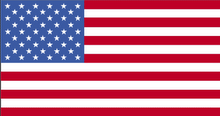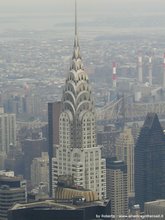Saturday, May 7, 2011
The Brennan Center for Justice at NYU School of Law - Symposium Re: Accountability After Citizens United - April 29th
Opening remarks by Brennan Center Executive Director Michael Waldman and keynote address by Hon. Cynthia L. Bauerly, Chair of the Federal Election Commission.
Panel 1: Can Shareholders Save Democracy?
Moderated by Ciara Torres-Spelliscy, with panelists William T. Allen, John Coates, Robert Jackson, Jennifer Taub.
Lunchtime remarks by Charlie Kolb, Committee on Economic Development. Introduction by Wendy Weiser, Director of the Brennan Center's Democracy Program.
Panel 2: Regulatory Pressure Points: New Strategies for Accountability
Moderated by Mimi Marziani, with panelists Ellen Aprill, Marc Elias, Bruce Freed, Holly Schadler.
Panel 3: The First Amendment Rights of Associations and Individuals
Moderated by Mark Ladov, with panelists Frances Hill, Dale Ho, Glenn Magpantay, Daniel Ortiz, Tobias Wolff.
Closing remarks by Sanford Lewis, Strategic Counsel on Corporate Accountability.
Wednesday, February 2, 2011
Citizen Jane Explains the Impact of Citizens United
Citizen Jane explains how Citizens United v. FEC reversed more than 100 years of settled law and gave corporations the same First Amendment rights as people.
Tuesday, July 20, 2010
Vendors Thumb Nose at City Restriction by Colin Moynihan - City Room Blog - NYTimes.com
New rules for selling art in public parks went into effect on Monday morning, and in Union Square Park little was going as planned, at least from the city’s point of view.
The park is one of four in New York, including Central Park, where the city will restrict the number of sellers of paintings, photographs, books and sculptures.
The parks department had installed plastic medallions the size of silver dollars and emblazoned with the words “Expressive Matter Vendor” around the perimeter of Union Square Park to designate places where the selling of fine art, photography and other materials would be permitted. But more than 100 artists who showed up at the park on Monday ignored those markers and instead milled at the southern end of Union Square, where they brandished signs and shouted their disapproval of the new rules.
“We’re going to stay inside this park and away from the marked spaces,” said Robert Lederman, an organizer of an advocacy group called Artist. “We’re going to defy the mayor and we’re going to defy the parks department.”
The rules, which the city announced a few months ago, limit the number of artists allowed to sell materials in or near Union Square Park, Central Park, Battery Park and the High Line. At Union Square, for instance, 18 artists are permitted to set up tables and sell on Mondays, Wednesdays, Fridays and Saturdays. The number of available spots there will rise to 58 on Tuesdays, Thursdays and Sundays.
Mayor Michael R. Bloomberg said the regulations were necessary because the artists were causing congestion. The artists denounced the rules as chilling free expression and challenged them in court. But on Friday a federal judge in Manhattan, Richard J. Sullivan, ruled that the rules seemed reasonable and that the city could enforce them.
Artists said they hoped to appeal, but in the short term they said they would move their battle to the court of public opinion. As knots of police officers and parks enforcement officers stood by on Monday morning the artists held aloft paintings and placards. They made speeches and chanted slogans. One man used chalk to write a passage from the United States Constitution on the sidewalk.
Jessica Hollander, a 34-year-old painter from Ridgewood, Queens, held a sign that read, “Bloomberg thinks artists have no value,” and she said she had been selling paintings in Union Square for about 18 months.
“I think this is a fight worth fighting,” she said. “It’s a tragedy to limit the number of artists out here and it’s scary to think of everything here becoming corporate.”
Nearby, John Conn, 61, a photographer from the Bronx, said that he thought the city was trying to squeeze artists out of the parks in deference to business interests.
A brief thundershower sent the artists running for the protection of a subway entrance overhang, but the sun soon emerged and the painters, photographers and sculptors returned to the southern plaza and began using umbrellas to ward off the glare from above.
Mr. Lederman surveyed the crowd and pronounced the event a success.
“We turned this almost into Woodstock,” he said. “This place is livelier now than it has been all year.”
Tuesday, June 15, 2010
Parks and Real Estate Values: The Key to Understanding Why They Want Street Artists Eliminated by Robert Lederman...
Here in their own words, from a front group for the Parks Department, is a report explaining it in detail:
Excerpt from the report:
Commerce and Central Park (the report goes into many other examples as well) The park added $17.7 billion in incremental value to surrounding
properties; the average value of these properties grew 73% faster than control group properties over the past decade...The relationship between a park that is in good condition and real estate values is a special case that could be used to match some direct benefits to costs. There are clearly direct beneficiaries from what economists would term the positive externalities of parks. Property values are directly impacted by parks, and property owners realize easily measurable gains, including higher lease and rental rates, longer tenure of lessees, and an increase in property values that is realized at the time of the sale...there is a growing body of evidence that there are measurable monetary gains for those who own property within close proximity of a park. In fact, two of the lessons learned through the New Yorkers for Parks/Ernst & Young study [see page 10 sidebar] were that strategic parks investments correlate with an increase in real estate values and that the proximity of parks that are in good condition affects private sector real estate investment decisions.
For the full report see:
Supporting Our Parks - A Guide to Alternative Revenues June 8th - pdf
Or here:
Supporting Our Parks - A Guide to Alternative Revenues - June 8th - scribd
Sunday, December 23, 2007
Happy Birthday Frank Zappa - RIP December 21, 1940 – December 4, 1993
Tuesday, December 11, 2007
Talk by Naomi Wolf - The End of America
10 Steps to Fascism
Naomi Wolf, author of The End of America - A Letter of Warning to a Young Patriot
1. Invoke a terrifying internal and external enemy.
2. Create secret prisons where torture takes place.
3. Develop a thug caste or paramilitary force not answerable to citizens.
4. Set up an internal surveillance system.
5. Harass citizens' groups.
6. Engage in arbitrary detention and release.
7. Target key individuals.
8. Control the press.
9. Declare all dissent to be treason.
10. Suspend the rule of law.
Sound familiar to you..??
h/t to: Yellowcake Walk
Wednesday, June 27, 2007
Chicago Tribune: Court Limits Student Free-Speech Rights by Pete Yost...
The court ruled 5-4 in the case of Joseph Frederick, who unfurled his handiwork at a school-sanctioned event in 2002, triggering his suspension and leading to a lengthy court battle.
Video
High court sides with school in 1st amendment decision (CNN)
Class photo (Getty Images/Mark Wilson)
In a concurrence, Justices Samuel Alito and Anthony Kennedy said the court's opinion "goes no further" than speech interpreted as dealing with illegal drug use.
"It provides no support" for any restriction that goes to political or social issues, they said.
In dissent, Justice John Paul Stevens said the ruling "does serious violence to the First Amendment."
Students in public schools don't have the same rights as adults, but neither do they leave their constitutional protections at the schoolhouse gate, the court said in a landmark speech-rights ruling from Vietnam era.
The court has limited what students can do in subsequent cases, saying they may not be disruptive or lewd or interfere with a school's basic educational mission.
Frederick said his banner was a nonsensical message that he first saw on a snowboard. He intended it to proclaim his right to say anything at all.
Frederick displayed his handiwork on a winter morning as the Olympic torch made its way through Juneau, Alaska, en route to the Winter Olympics in Salt Lake City.
School principal Deborah Morse said the phrase was a pro-drug message. Frederick denied that he was advocating for drug use and brought a federal civil rights lawsuit.
Former independent counsel Ken Starr, whose law firm represented the school principal, called it a narrow ruling that "should not be read more broadly."
Taking issue with that, Steven R. Shapiro, national legal director of the American Civil Liberties Union, said, "It is difficult to know what its impact will be in other cases involving unpopular speech."
The Students for Sensible Drug Policy said it was sad that the court thought there should be a drug exception to the First Amendment.
In their concurrence Alito and Kennedy said that the decision "goes no further than to hold that a public school may restrict speech that a reasonable observer would interpret as advocating illegal drug use."
Nor does it address political or social issues such as the wisdom of the war on drugs or of legalizing marijuana for medicinal use, Alito and Kennedy said, embracing language from Stevens' strong dissent.
Stevens said the First Amendment protects student speech if the message itself neither violates a permissible rule nor expressly advocates conduct that is illegal and harmful to students.
"This nonsense banner does neither," Stevens said.
Justice Stephen Breyer said the court should not have decided the First Amendment issue, but should have simply held that Frederick's claim for monetary damages because school officials have qualified immunity in carrying out their duties.
Frederick, now 23, said he later had to drop out of college after his father lost his job. The elder Frederick, who worked for the company that insures the Juneau schools, was fired in connection with his son's legal fight, the son said. A jury recently awarded Frank Frederick $200,000 in a lawsuit he filed over his firing.
Joseph Frederick, who has been teaching and studying in China, pleaded guilty in 2004 to a misdemeanor charge of selling marijuana at Stephen F. Austin State University in Nacogdoches, Texas, according to court records.
The case is Morse v. Frederick, 06-278.














